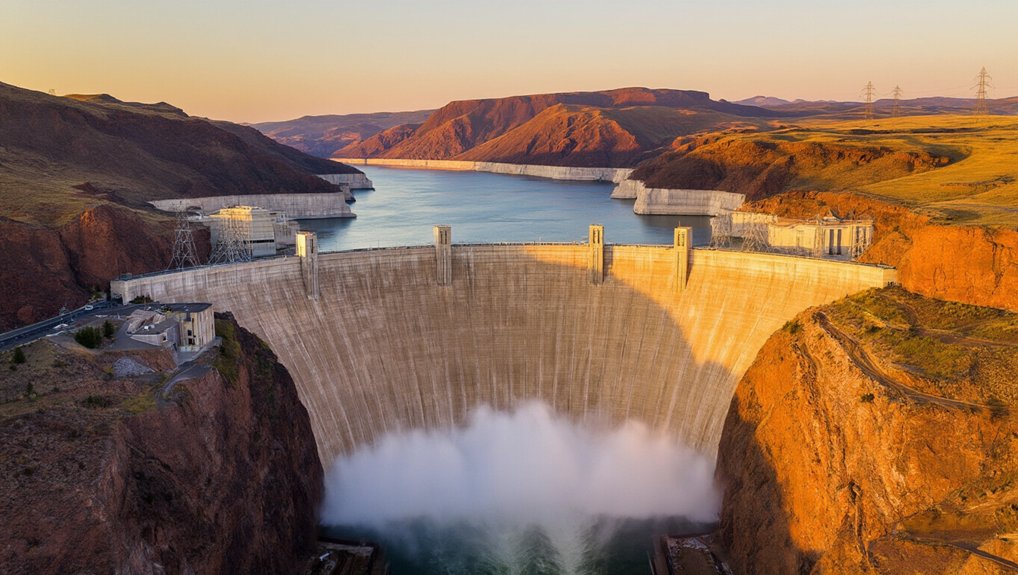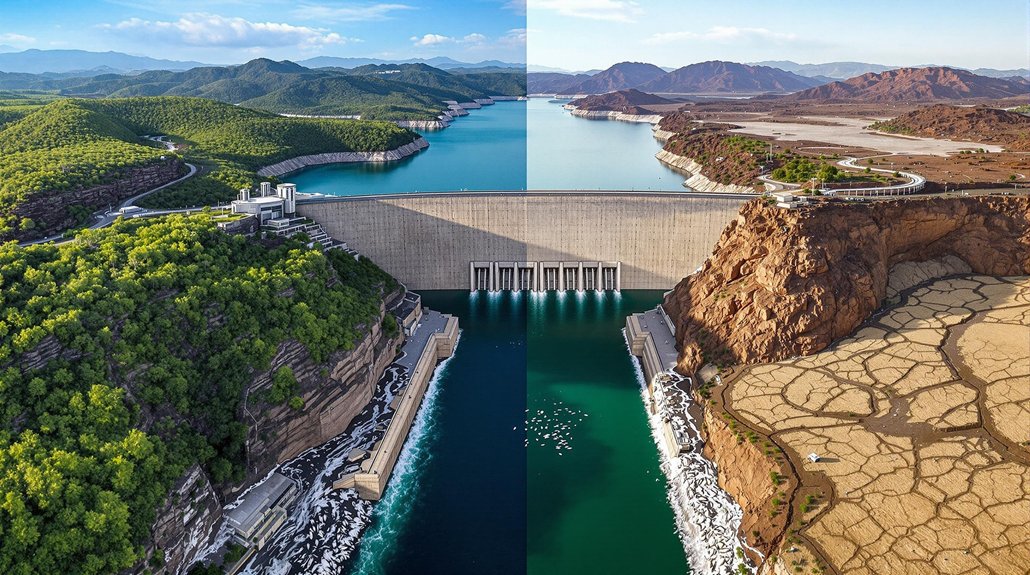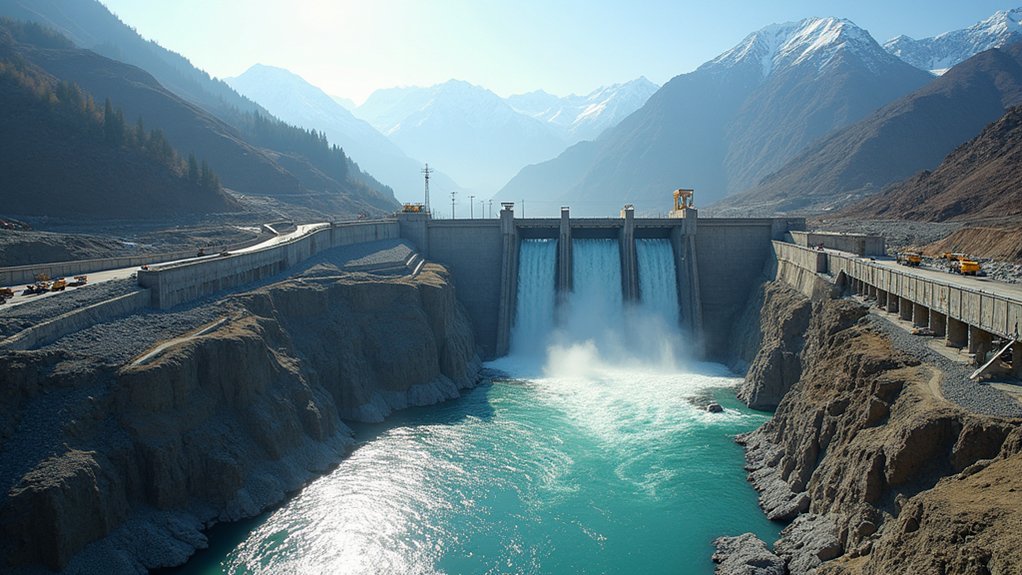Standing majestically on the Columbia River in Washington state, the Grand Coulee Dam isn’t just another concrete monstrosity—it’s an engineering marvel that dwarfs most human achievements. Located 145 km west of Spokane, this behemoth stands 550 feet tall and stretches 4,173 feet across the river. For perspective? It’s three times bigger than the Great Pyramid and makes Hoover Dam look like a kiddie pool with 2.5 times more concrete. Not bad for something built between 1933 and 1942.
The dam’s real claim to fame is its ridiculous power output. What started as a modest 1,974 MW facility has morphed into a hydroelectric monster capable of generating up to 7,200 MW after decades of upgrades. Thirty-three generators spread across four powerhouses do the heavy lifting, with the Third Power Plant housing six generators that alone produce 4,215 MW. That’s enough juice to power several million homes. Yeah, seriously.
From modest beginnings to hydroelectric beast—Grand Coulee Dam now cranks out enough power to make your phone charger feel utterly inadequate.
During the Great Depression, Grand Coulee wasn’t just about electricity—it was a lifeline. It employed 8,800 workers when jobs were scarcer than common sense in Congress. Later, it became America’s secret weapon during WWII, powering aluminum production and the plutonium facilities at Hanford. Talk about multitasking.
The technical specs are just as impressive. Massive 40-foot diameter penstocks feed the largest generators, handling up to 35,000 cubic feet of water per second. The dam even incorporates pumped storage capabilities, recycling water back to Banks Lake during off-peak hours. As the leader in renewable electricity generation, hydropower projects like Grand Coulee exemplify sustainable energy solutions with reliable output compared to weather-dependent alternatives. Efficient? You bet. Its annual energy production of 80 billion kilowatt-hours is equivalent to what 15 nuclear reactors could produce.
Of course, all this power comes at a cost. The dam flooded critical salmon runs and permanently altered the Columbia River ecosystem. It transformed central Washington into prime agricultural land while simultaneously destroying riverine habitats. Its reservoir, Franklin Delano Roosevelt Lake, was named after the president who endorsed the high dam design in 1934. Classic human progress story—we get electricity and farms, fish get screwed.
Owned and operated by the U.S. Bureau of Reclamation, Grand Coulee continues balancing power generation, irrigation needs, and flood control. Environmental debate aside, it remains an undisputed engineering triumph that helped shape the modern Pacific Northwest.
References
- https://en.wikipedia.org/wiki/Grand_Coulee_Dam
- https://www.ebsco.com/research-starters/history/work-begins-grand-coulee-dam
- https://www.cbr.washington.edu/dart/hydro/grandcoulee
- https://ohiostate.pressbooks.pub/sciencebites/chapter/environmental-impacts-of-the-grand-coulee-hydroelectric-dam/
- https://depts.washington.edu/depress/grand_coulee.shtml








